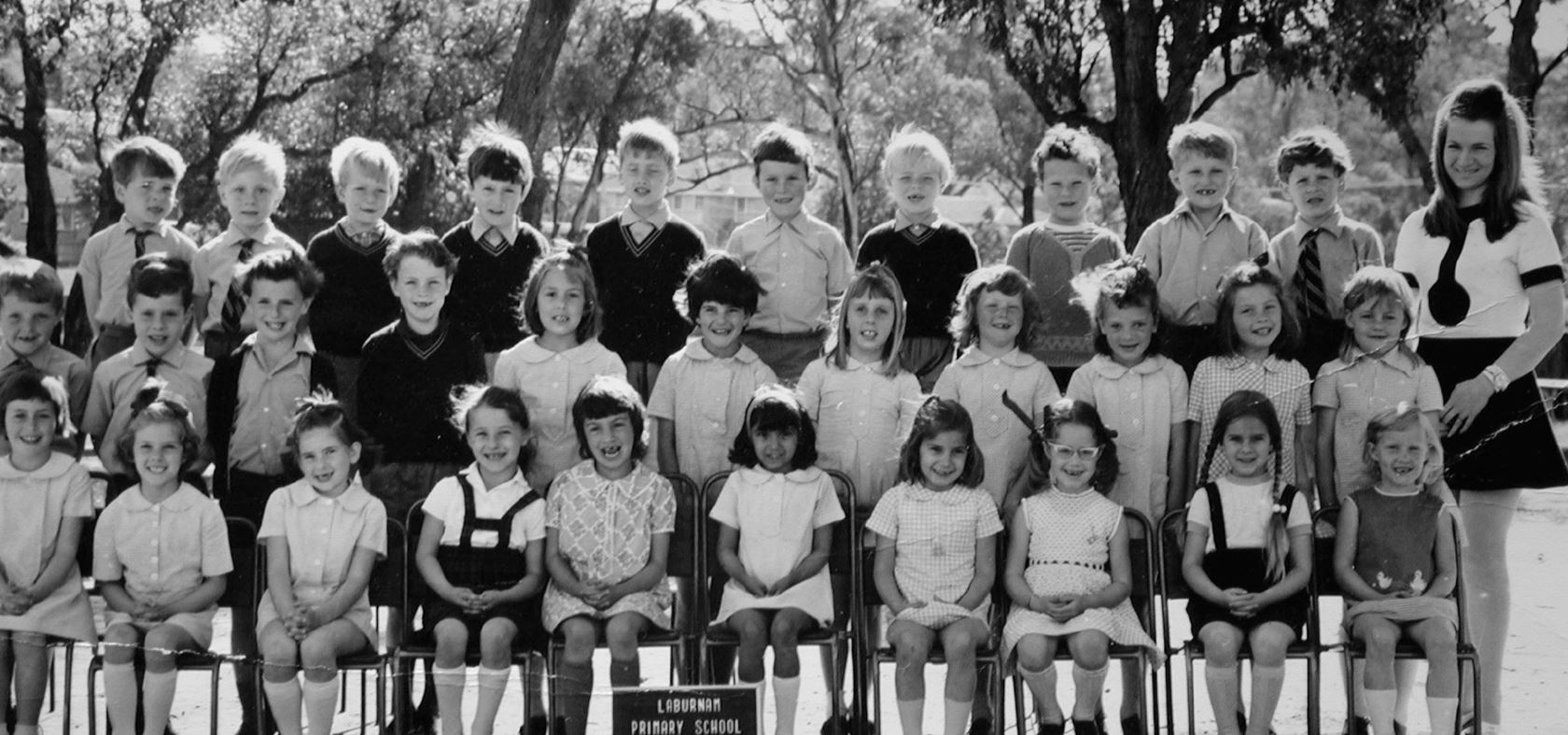Warm-up
What can you see in the pictures? Can you guess how old the people in the pictures are? How would you describe them? Do they look like anyone you know?

Pre-reading
- Do you ever look at old photographs from elementary school or kindergarten? Do you usually recognise all your classmates? Do you remember all their names?
- Look at the old photograph below. When do you think it was taken? What can you see in the photograph? Were you and your classmates similar when you started school?

Reading
Read the text below about the old photograph and do the tasks that follow.
Where are they now?
By Joosep Mihkelson
Ever stumbled across old school photographs at the bottom of an old box in the cupboard, and been faced with the younger faces of people from your past?
Sometimes this is a nice surprise and sometimes it’s a bit of a shock to think how your old friends have changed or even long gone, having moved away to another town and another school. This happened to me just the other day when I stumbled across this old photograph from my primary school days.
This picture is of my first class at a school in Australia, and as you can see by the clothes my teacher is wearing and the fact that it is a black and white image, it was taken quite some time ago. Anyway, I started to pan across all the faces to see how many I could remember, and as I looked at each one, a distant picture of a person from my past began to emerge. Of course, some I remembered better than others, but then how much harder it is to forget the extroverts, the cheeky ones who were always being asked to stay behind at lunchtime or after school because they had been rude or too loud in class.

Looking at the front row, I remember the blonde girl on the far right – Pamela Smith. She was a spirited little girl and although she wasn’t always actually naughty, she was often around when someone else was caught doing something bad. But she had a good sense of humour and often made the class laugh. I also remember the sixth girl from the right because she was Italian and had funny things in her sandwiches at lunchtime. Her name was Agostina, and with her laughing eyes, it’s no surprise that she later ended up being good friends with Pamela. The last girl on the left was Jennifer Smith (no relation to Pamela), and she was special. She was pretty, clever and great fun, but then I am biased because I was secretly in love with her all through primary school. She even became my first ever girlfriend when we were in the sixth class. I heard later that she went on to study psychology at university, and is now an author and consultant in human resources.
One girl in the second row caught my eye, the fourth girl from the right. For the life of me I can’t remember her name. She was the kind of girl who was studious and sensible and never got into trouble. She was clearly from a good home with parents who expected her to behave at school. So in that sense none of us boys ever really paid her much attention because we all thought she was boring. But later, after having been quiet all through school, she started to speak up in class. She was still well-behaved, but we all realised she had spunk – she could make us laugh too. I wonder what she is doing now? The boy in the second row wearing the dark jumper was Glen Caldwell. He was one of the ringleaders. He was taller than the rest and often led us into all sorts of mischief. I heard he went into business and now has a chain of sports stores.
I can’t really remember the first three boys on the right in the top row. They must have left the school at some stage because, although their faces are familiar, I can’t remember anything else about them. The boy in the middle with the straight fringe that goes up on the left is Peter Rosier. He was my best friend all through primary and secondary school. He was the curious type. He was always inventing things and building them himself. He was good at maths and went on to become a civil engineer. He also moved to the tropical north coast of Australia, where he still lives in the small town of Mackay. Second from the left is yours truly – now living in Estonia. I wonder how many of my old friends even know where that is!
Comprehension
- Students who worked hard in class were boring.
- The author of the text is a writer by profession.
- The boy with the dark jumper was the ringleader.
- It is easy to forget the most active students in the class.
- Jennifer was special to the author as he had feelings for her.
- Some students left the primary school before finishing it.
- Teachers always wear old-fashioned clothes.
- Although some faces looked familiar to the author, he could not remember their names.
- In order to become a civil engineer you have to be curious and good at maths.
- The old photo was found by accident.
Vocabulary work
Phrases
stumbled across ∘ been faced with ∘ pan across ∘ for the life of me ∘ paid her much attention ∘ speak up ∘ well behaved ∘ at some stage ∘ yours truly
Words
image ∘ distant ∘ emerge ∘ extroverts ∘ cheeky ∘ spirited ∘ naughty ∘ biased ∘ human ∘ resources ∘ studious ∘ sensible ∘ spunk ∘ ringleaders ∘ mischief ∘ familiar ∘ fringe ∘ curious
- adj has a serious approach to learning
- n a lively or brisk quality in a person or a person’s actions
- adj favouring one person or side over another
- v to take a sweeping sidewise look at something (e.g. when using a camera)
- v to become visible or noticeable
- adj far off
- adj bold and often offensive behaviour sometimes marked by a sense of humour
- n hair that is cut in a line across the forehead
- n reckless behaviour that annoys or irritates
- adj having, containing good sense or reason
Discussion points
- How do people change through time? Talk about some of the people in your past – how have they changed? Were they good or bad changes? What could have been different?
- What physical features change through time? How have you changed? Describe your appearance 10 years ago (from memory, or bring an old photograph of yourself), and compare it to what you look like now?
- Can you think of a quality that you have now and have always had? (e.g. thoughtful, careful, positive) Make a list of positive and negative qualities you think you have now and be ready to talk about them.
- Some people say that appearance is the most important aspect of a person. Why do you think they say that? Do you agree? Give reasons.
